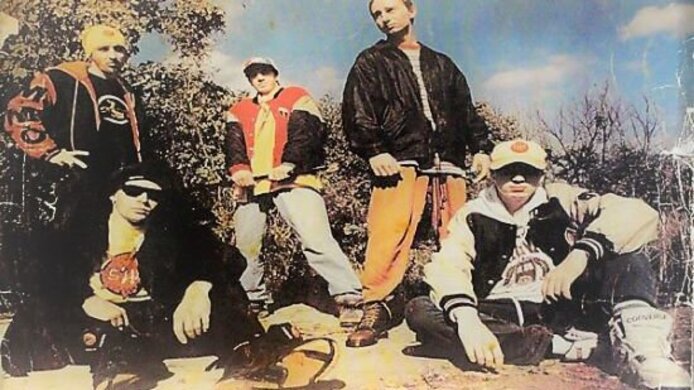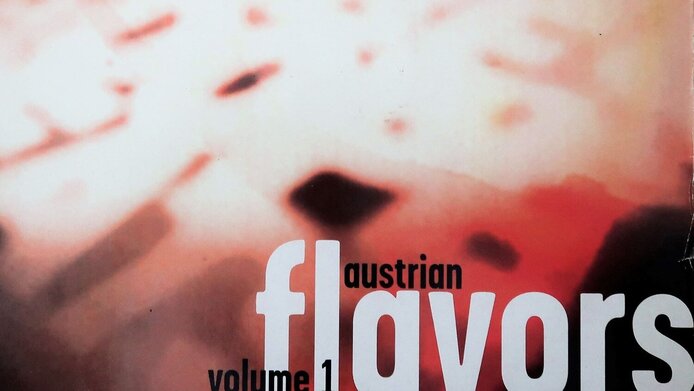Hip-Hop yes, McDonalds no

Musical genres can have birthdays too. In the case of hip-hop, for example, conventional wisdom says that it was born in 1973. Some have even narrowed it down to a particular party one summer in New York. This means that hip-hop, one of the most influential youth cultures in the world, is about to hit a major milestone in 2023: the half-century mark.
Over the last 50 years, hip-hop has triumphed across the world, inspiring countless local scenes and styles. Musicologist Frederik Dörfler-Trummer has delved into one of those local scenes. His dissertation “Hip-Hop in Austria. Local Aspects of a Global Culture”, which has also been published as a book, investigates the history of the Austrian hip-hop scene from its humble beginnings to its present-day trends. Dörfler-Trummer had already chosen hip-hop in Austria as the subject-matter of his master’s thesis. “But even after I had finished there were still so many unanswered questions about how the scene has evolved,” he says. There had already been some research on Germany and the US, but nothing on Austria. The time had come to change that.
Layer upon layer, a new sound
“When you look at hip-hop from a research perspective, it’s mostly about the rapping, i.e. the chanting and the lyrics, and its cultural influence,” says Dörfler-Trummer. Naturally those aspects also feature in his dissertation. “However, as a musicologist, it was important to me to foreground the music for a change.” In fact, that is exactly why his book takes a detailed look at hip-hop subgenres.
How would a musicologist describe hip-hop in a nutshell? “The classic hip-hop sound is made up of a so-called ‘boom bap’ beat: four beats to a measure with strongly accentuated drums. The music is heavy on rhythm, while keeping both the melody and the harmony quite simple.” Just as in other genres of music, hip-hop also has classic “instruments” such as the drum machine, notably the Roland 808 model, which you use to program rhythms, or “beats”, that are played in loops, over top of which you lay samples. Samples can be recognizable excerpts from other musical pieces (from funk to classical music), but also self-recorded elements. “In hip-hop, the layers are stacked on top of each other, whereas other styles tend to constantly introduce new melodies,” says Dörfler-Trummer. Writing a hip-hop number is very different from writing a pop song. But now the hip-hop genre is almost five decades old.
Recommended reading
Frederik Dörfler-Trummer: Hip Hop from Austria - Local Aspects of a Global Culture, transcript 2021 (in German)
Hip-hop in three-quarter time
The story of how hip-hop came about has been told many times. The culture and its techniques made their debut at block parties in New York in the late 1970s. From the 1980s onwards, the scene diversified and became commercially successful. By the 1990s it had definitely become a world-wide phenomenon. However, what emerged cannot merely be termed “globalization”, but rather something that researchers call “glocalization”. “This is an interplay of globalization and localization,” says Dörfler-Trummer. Hip-hop is a global culture but is also very closely intertwined with the local environment and local references. This is reflected both in the content (“Anyone talking about ghettos in Austria cannot claim to be authentic; there are no ghettos here.") and in the melodies, as the samples are sourced from local music. In Austria, musicians have even produced hip-hop tracks in three-quarter time in a nod to Vienna’s waltz tradition.
The local are the global are always inextricably linked, the musicologist explains in his book. The hard subgenre “trap”, which borrows from electronic music, originated in the southern states of the US, only then to radiate outward and shape global culture yet again. Today there is also trap with an Austrian twist. “Globalization doesn’t have to mean uniformity,” says Dörfler-Trummer. Fears of “McDonaldization” are unjustified. “It can also mean a refocusing on local traditions, which in turn tap into the values or techniques of global hip-hop culture.”
From Falco to Money Boy and Hanuschplatzflow
In his book, Dörfler-Trummer divides hip-hop’s development in Austria into approximately five phases. In its infancy (from the early 1980s to 1992), it was mainly pop artists like Falco or the group EAV who incorporated rapping in their songs. The year 1993 marks the emergence of an Austrian scene in its own right, with the release of a now legendary record featuring various domestic hip-hop artists (“Austrian Flavors Vol. 1”) and the first EP where the rapping was done entirely in German (“Broj Jedan” by Schönheitsfehler). After that, Austrian hip-hop grew in fits and starts, with musicians bursting onto the scene only to disappear again. The center of activity oscillated back and forth between Vienna and Linz, relocating to Salzburg on occasion. Around the year 2000 radical changes took place with a new generation working its way up. In 2005, “street rap” and its hard leitmotifs came to Austria, and dialect rap also gained in popularity. In the 2010s, it was artists like Money Boy or the Hanuschplatzflow collective who brought the global trends of cloud rap and trap to Austria.
The book ends with the year 2018. Books have to end somewhere, but in this case 2018 is a logical choice, says Dörfler-Trummer. “Cloudrap was already dying down again by then. And right now we are once again on the cusp of a transformation.” Currently, themes like feminism or the “Me Too” movement are becoming increasingly important. “Hip-hop is constantly evolving,” says the musicologist. “There is always something new to discover.”
Frederik Dörfler-Trummer is a freelance musicologist and researcher specializing in hip-hop music and related popular music styles. He received his doctorate from the University of Music and Performing Arts Vienna. In addition to his academic work, he holds hip-hop workshops at schools and works as a DJ and producer. A grant from the Austrian Science Fund FWF has made it possible to publish his book, which is also available as an open-access e-book.







